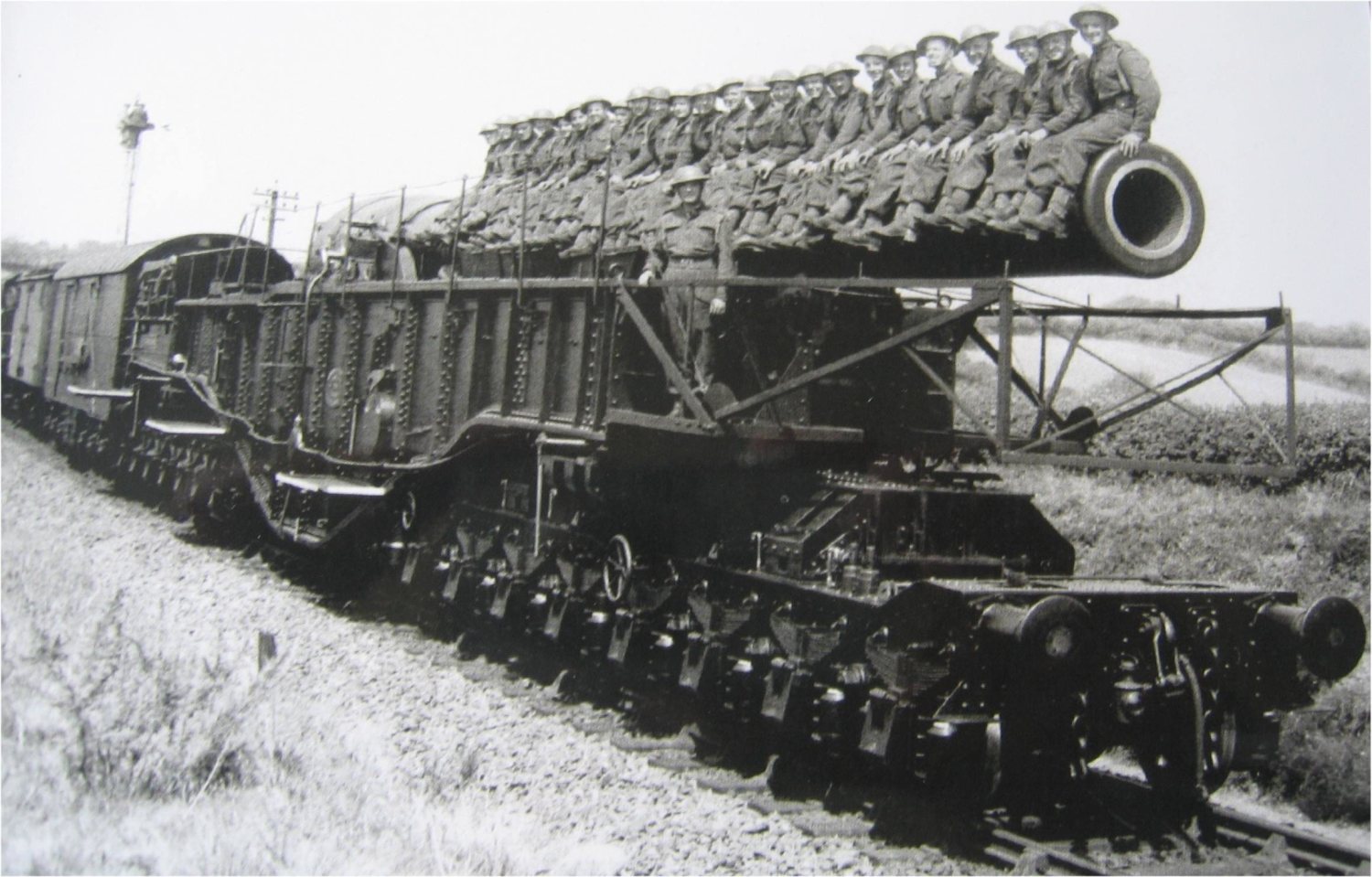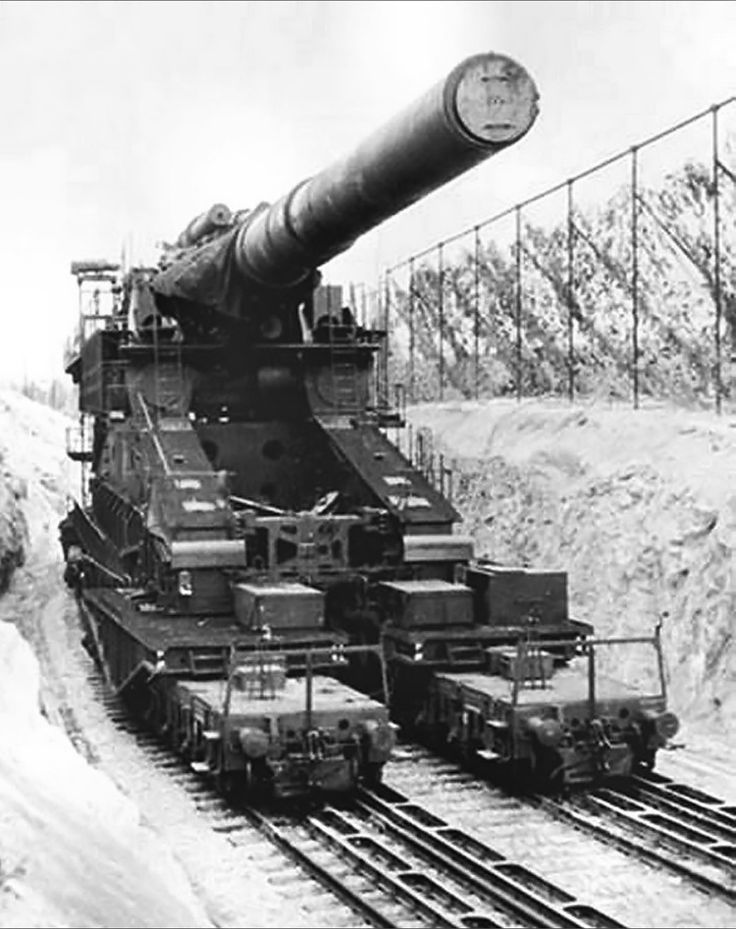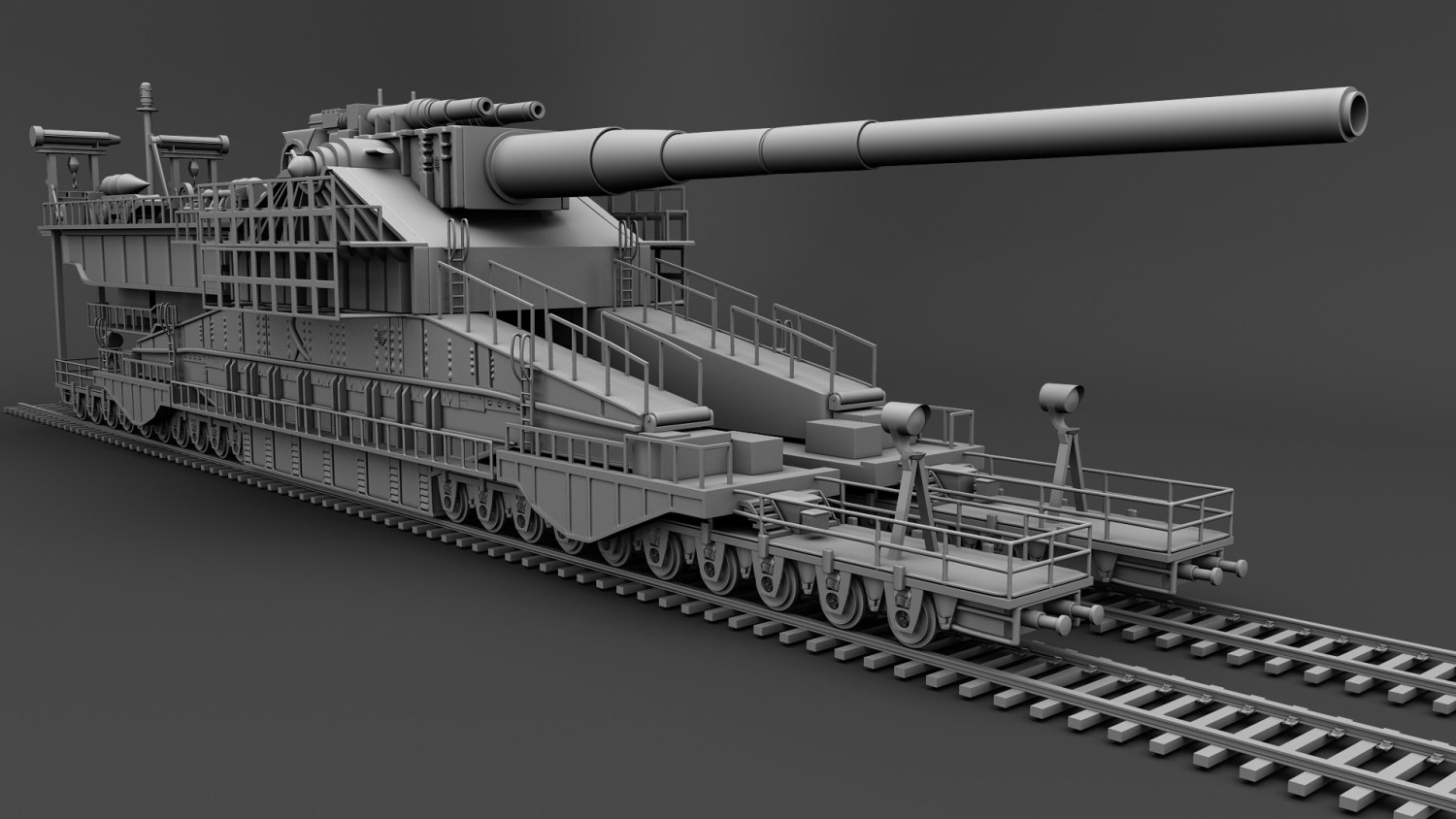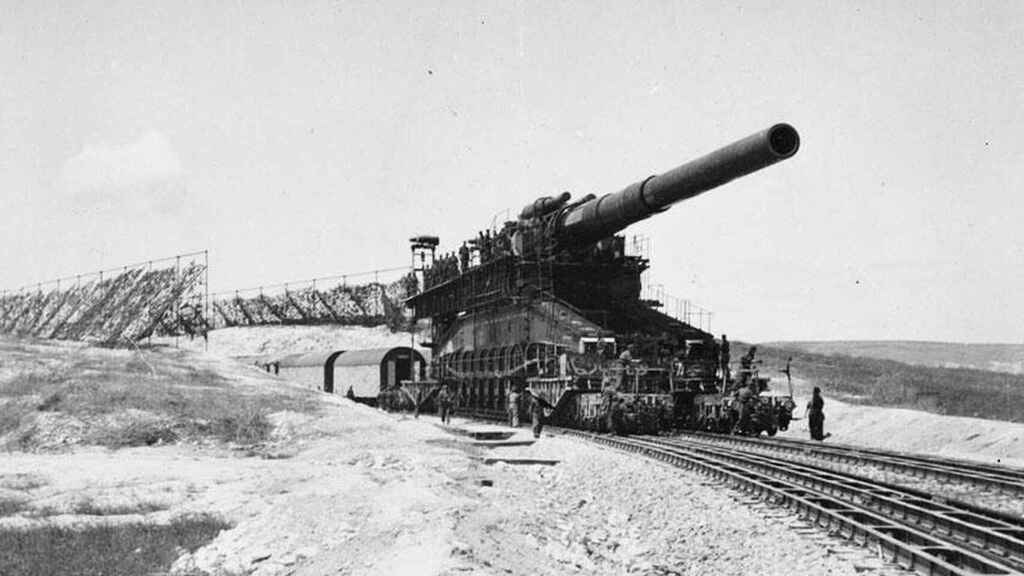At 800 millimeters, the Schwerer Gustav railway gun was the largest artillery of that kind ever built. It had an operational life of only 13 days, a period in which it fired only 300 shots. It required 25 rail cars and 2,000 support men to move, and it took more than six weeks to get it into position to start firing.
The weapon was created in Germany during World War II and used against the city of Sevastopol on the Crimean Peninsula. Due to its size, cost and complexity, there is no doubt that such a weapon will never be seen again.
Schwerer Gustav Railway Gun: The Largest Artillery Piece Of All Times

World War II stimulated the development of the war industry like never before in history. It is true that during the Cold War and later years, nuclear weapons capable of frightening anyone have been developed. However, at the same time, "traditional" weapons - cannons and tanks- also reached their greatest development in those years.
An example is the German Schwerer Gustav railway gun, a monster capable of firing conventional projectiles 80 centimeters in diameter and weighing more than 4,800 kilograms. Schwerer Gustav was, without a doubt, the largest railway gun ever built by humankind.
The Impressive Schwerer Gustav Railway Gun

The figures referring to the Schwerer Gustav railway gun were impressive. It could only be moved over rail tracks, and 25 super-reinforced wagons were needed to transport the beast and its ammunition. A group of 2,000 soldiers served as "support."
The soldiers were in charge of assembling it, pointing it out, and operating it once it reached its destination. Once installed, a crew of around 500 men was in charge exclusively of the complicated process of maintenance and handling of the ammunition.
Even using this bunch of people, it took three to six weeks to get the Schwerer Gustav railway gun ready. Two 10-ton bridge cranes specially designed for this task were used. Just positioning the material needed for the assembly was a masterful task of railway planning.
Often, as we shall see later, hundreds of meters of the railway had to be built.
When the Schwerer Gustav railway gun started to fire bullets, these 500 men would remain, literally, at the foot of the railway gun. But part of the rest of the personnel was dedicated to doing intelligence tasks to determine which targets should be bombed.
Another important number of troops was in charge of operating the light anti-aircraft artillery. This artillery always accompanied Schwerer Gustav railway gun when it traveled to protect it from any eventual enemy air attack.
Trouble Finding A Target

The manufacturer of the Schwerer Gustav railway gun, as of much of the German armament, was the Krupp group of companies. At all times, there was a small group of Krupp civil engineers in charge of polishing and solving any technical problem inherent in the operation of the device.
Despite the cost and labor involved in building it, Schwerer Gustav was only used once. It had a short operational life of 13 days, during which it fired a total of 48 shells. The reason for such little use is that there simply weren't many suitable targets for this gun.
Hitler and his strategists planned to use the Schwerer Gustav railway gun to attack the Maginot fortification line. But when the western campaign began in 1940, the railway gun had still not left the Krupp workshops in Essen. The German army faced the fortifications without its most crucial siege weapon.
When the Krupp workers finished testing and assembling the barrel parts, there was nothing left to use it for. In early 1941 it was thought that Gibraltar might be a worthy target for Schwerer Gustav. Spain was neutral, and permission from General Franco was needed for German troops to cross the country.
As Franco was unwilling to let Spain get involved in the conflict, the Schwerer Gustav railway gun again ran out of targets to shoot.
Operation "Barbarossa"

Finally, the invasion of the Soviet Union (Operation Barbarossa), which began during the second half of 1941, provided the opportunity that Schwerer Gustav was looking for. At the beginning of 1942, the troops of the German army were near the Crimean Peninsula. In front of them was the impenetrable naval base of Sevastopol.
The German high command planned to use this base as a supply port, but its fortified defenses made it a tough nut to crack. Around the perimeter of the city was a long chain of forts, some of them built at the time of the Crimean War in 1854. But most were more modern, equipped with large-caliber coastal batteries.
The place seemed ideal to be bombed by Schwerer Gustav railway gun, and its destruction would show the world the power of the German army.
Soon, strategists began touring Europe looking for heavy railway guns to stage a siege the old-fashioned way.
Transport Of Schwerer Gustav

Schwerer Gustav was transported to the Crimea on a specially reconstructed railway track. In front of the railway gun, a large group of operators prepared the chosen firing position in Bakhchisaray, a small town 25 kilometers from Sevastopol.
For weeks, more than 1,500 men under the orders of a German army engineer dug across a small plain to build an arch-shaped double railway.
On the sides, the terrain was raised, to provide cover and protection for the railway gun. In that place alone, 1,200 meters of reinforced tracks were built.
Finally, on June 5, 1942, the Schwerer Gustav gun joined the artillery pieces firing toward Sevastopol. To get an idea of the magnitude of this siege, serve the fact that by the time Sevastopol surrendered, at the beginning of July 1942, no less than 562,944 artillery shells had fallen on the port.
Among them were the 48 projectiles, almost 5 tons each, fired by Schwerer Gustav.
Firing 14 Shots A Day

The shots were confirmed by a Luftwaffe Fieseler Fi 256 Storch specially assigned to the gun. On the first day, Schwerer Gustav fired 14 shots.
You might think 14 shots was a rather slow pace, but it's a pretty good number for a gun of this size. Theoretically, a shot could be fired every 15 minutes, but the truth is that the preparation of each projectile and the loading was a considerable task.
This had to be carried out in several stages, including taking the temperature of the bore, the precise calculation of the air temperature, wind speed at different heights, and the placement of the load in the chamber. All this took time.
On June 17, the last 5 projectiles were launched against Fort Maxim Gorky and finished the work for the Schwerer Gustav railway gun.
The Remains Of Schwerer Gustav

After Sevastopol was handled, the Schwerer Gustav was taken to Leningrad, where it fired a few more shots. After that, it was taken to Germany for a complete overhaul and barrel change.
Including the 48 fired in Crimea, Schwerer Gustav had launched about 300 shells in total. This includes tests, training, and demonstrations.
The old tube was brought back to Essen for rectification, but the barrel never shot again. At some point, it was thought to change its gun for a 520 mm one to increase its range, but such a modification was never carried out.
In 1945 Schwerer Gustav's pieces were distributed throughout Europe. The rail transports tasked with moving the parts had been constantly attacked by Allied aircraft, and the parts had simply been abandoned.
Today, all that remains of the Schwerer Gustav are a few shells in museums.



